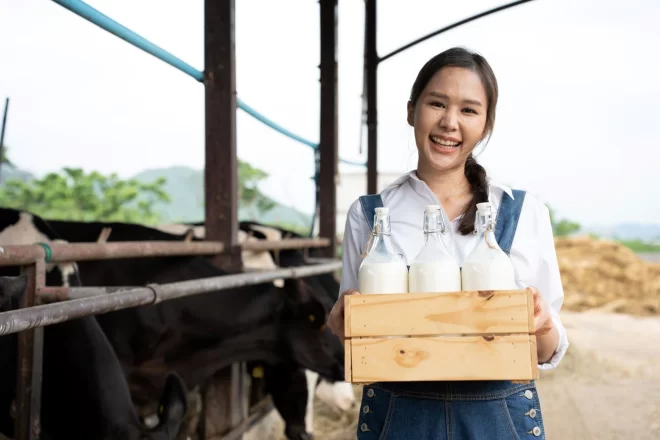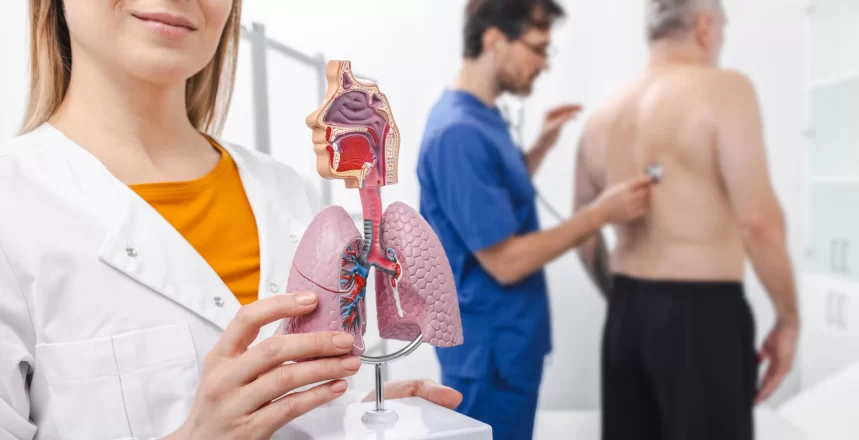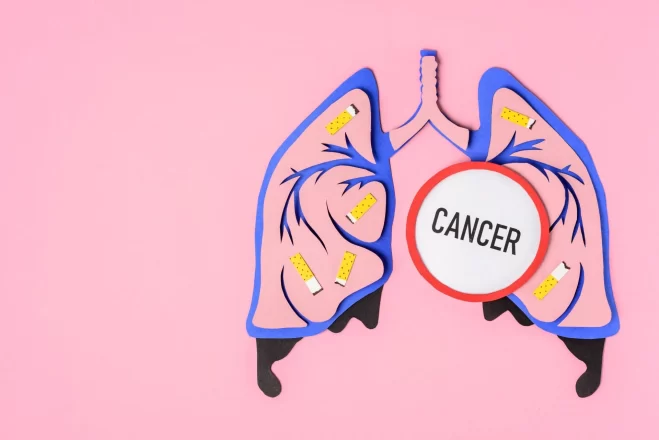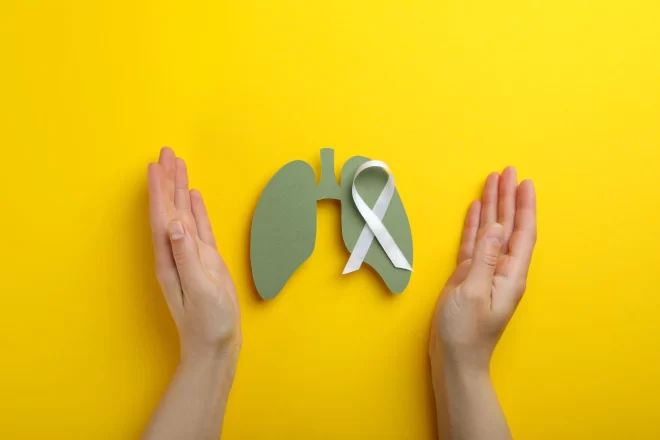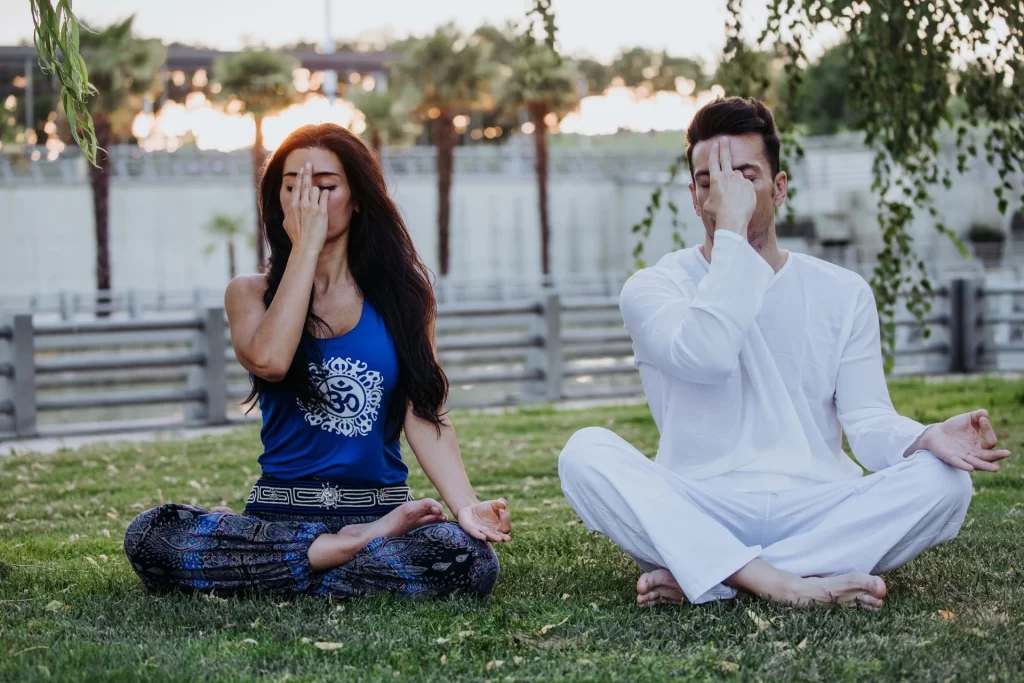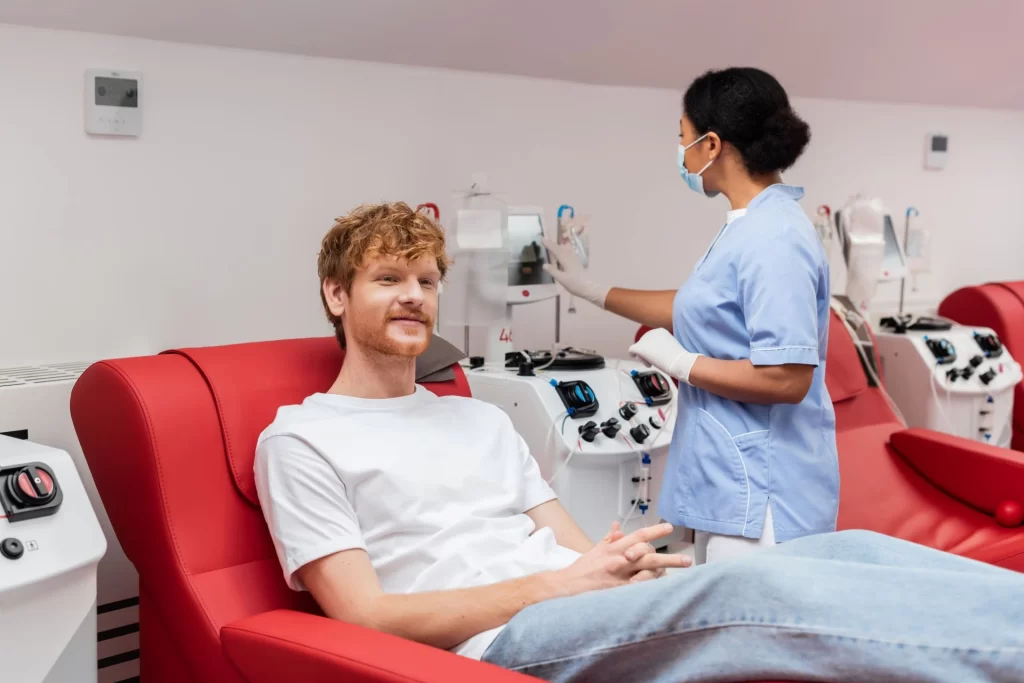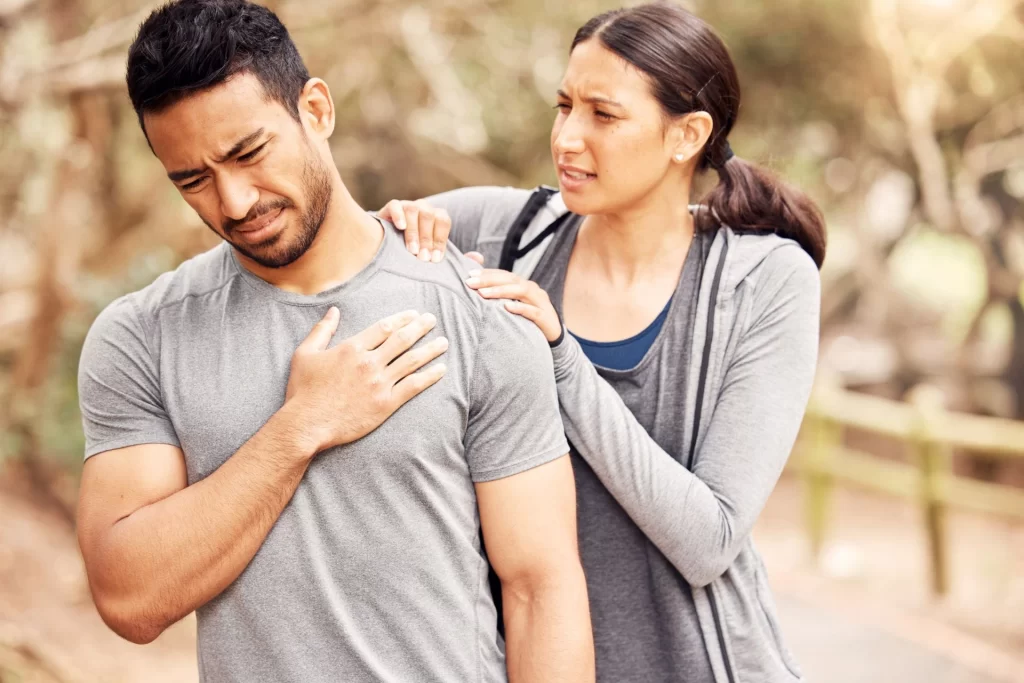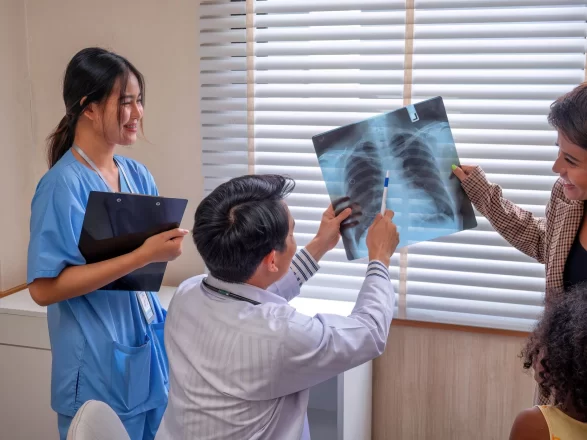Lung Cancer is a type of cancer that originates in the lungs and this cancerous cells in the lungs begin to divide uncontrollably forming a tumor or a mass. This tumor or mass can interfere with normal lung function and can potentially spread to other parts of the body.
Types of Lung Cancer:
1) Non-Small Cell Lung Cancer (NSCLC): This is most common type of Lung Cancer and accounts for about 85% of all the lung cancer cases diagnosed. Subtypes of Non-Small Cell Lung Cancer (NSCLC) are:
- Adenocarcinoma: This is most common subtype in non-smokers.
- Squamous Cell Carcinoma: This subtype of cancer is linked with smoking.
- Large Cell Carcinoma: This less common subtype of lung cancer but is more aggressive in nature.
2) Small Cell Lung Cancer (SCLC): This is more aggressive type of lung cancer and spreads faster than NSCLC, It is strongly associated with smoking.
About Ayurveda
Ayurveda is an ancient and natural system of medicine that has originated in India over 5,000 years ago. The word “Ayurveda” comes from the Sanskrit words “Ayur” (life) and “Veda” (knowledge or science), meaning “the science of life.”
The primary goal of Ayurveda is to maintain health and prevent diseases. Ayurveda also helps to promote balance and harmony between mind, body, and spirit. Ayurveda helps to treat diseases by restoring the balance between doshas. The key component of Ayurvedic treatment for lung cancer is herbal medicine, diet therapy, Panchakarma, Rasayana therapy, yoga and meditation, and lifestyle modifications.
Dr. Ravi Gupta, Best Ayurvedic Doctor for Lung Cancer Treatment in Mumbai
Dr. Ravi Gupta, M.D. (Ayurveda) is a highly regarded and well-experienced Ayurveda Cancer Consultant based in Mumbai. He has around 13 years of experience and specializes in holistic and Ayurvedic treatment of Lung Cancer. He charts out personalized treatment plans through integrating traditional Ayurvedic principles with modern oncology modalities.
Dr. Gupta also advises personalized dietary plans to support healing and further help to improve mental and physical well-being of lung cancer. He also advises Panchakarma and detoxification to eliminate toxins in lung cancer patients.
Best Ayurvedic Treatment of Lung Cancer
Lung Cancer in Ayurveda is known as a manifestation of “Kasa Shwasa Roga” and is caused by deep seated imbalance in Vata and Kapha Doshas. Lung cancer is also caused due to accumulation of toxins and aam (undigested food material) in the body. Ayurvedic Treatment principles on Lung Cancer relies on certain principles:
- Detoxification of body.
- To improve strength or ojas in lung cancer patients.
- To restore balance or harmony of doshas.
- To inhibit growth of lung cancer cells.
- To improve respiratory function in lung cancer.
- To enhance overall quality of life in lung cancer patients.
Herbal Medicines for the Treatment of Lung Cancer
Certain Ayurvedic medicines that proves beneficial in lung cancer are:
- Kanchanara Guggul: It has a well-known antitumor and anti-inflammatory effect.
- Haridra: It has a potent anti-cancer and anti-oxidant properties.
- Vasaka: It is good expectorant and further improve lung functions in lung cancer patients.
Panchakarma (Detoxification) Therapy for the treatment for Lung Cancer
Panchakarma proves extremely beneficial in the treatment of Lung Cancer. Certain Panchakarma that can prove useful in Panchakarma are:
- Virechana (Therapeutic Purgation): It help to detoxify dustha dosha from the body and proves extremely beneficial in kostha sudhhi. After kostha sudhhi in lung cancer patients certain therapies like Rasayana therapies can prove extremely beneficial.
- Basti (Medicated Enemas): Basti also help do kostha sudhhi in lung cancer patients. In emaciated patients, Matra Oil Basti can help to build up the body of lung cancer patients.
- Nasya: Nasya can help to improve lung cancer patients.
Yoga and Pranayama for Lung Cancer Patients:
It help to improve lung function in lung cancer patients. It also help to calm the mind and relieve anxiety.
- Anulom-Vilom Pranayama: It help to balance vata dosha and prana in lung cancer patients.
- Bhramari: It help to reduce anxiety and promote oxygenation in lung cancer patients.

Rasayana (Rejuvenation) Therapy in Lung Cancer Patient:
Post Panchakarma therapy, Rasayana Therapy can help to restore vitality and prevent recurrence in lung cancer patients.
- Chyawanprash Rasayana: It help to prove extremely beneficial as a respiratory tonic in lung cancer patients.
- Amalaki Rasayana: It has a good anti-oxidant properties and help to slow down the growth of lung cancer.
- Suvarna Bhasma: It help to improve immune system and in tissue generation in lung cancer patients.
+91-9819274611
Your health is my priority, and together, we can work towards a brighter, healthier future.
— Dr. Ravi Gupta, M.D. (Ayurveda),
Ayurveda Cancer Consultant,
Specialist in Ayurveda and Panchakarma.


